About the Book
X
Chapter Analysis
Chapter 30: The Altar of Incense and the Census Tax
Background History and Timeline: Exodus continues the narrative of the Israelites' journey through the wilderness, following their deliverance from Egypt. The events likely occurred around the late 15th or early 14th century BCE.
Locations Mentioned: The chapter primarily focuses on the instructions for the construction of the altar of incense and the census tax for the tabernacle.
Themes and Conflicts: Exodus 30 elaborates on the importance of worship, prayer, and financial support for the tabernacle. It underscores the sacredness of the tabernacle and the responsibility of the Israelites to contribute to its maintenance and operation.
Main Characters: The main characters in this chapter include Moses, Aaron, Bezalel (the skilled craftsman), and the Israelites.
Specific Passages:
Exodus 30:1-10: Instructions for constructing the altar of incense, its dimensions, materials, and placement within the tabernacle.
Exodus 30:11-16: Regulations for the census tax, a half-shekel contribution required from every male over twenty years old, used for the service of the tabernacle.
Exodus 30:17-21: Specifications for the bronze basin, used for ritual washing by the priests before entering the tabernacle.
Explanation: In Exodus 30, God provides Moses with instructions for the construction of the altar of incense and the establishment of the census tax to support the tabernacle and its services.
The altar of incense was to be made of acacia wood overlaid with pure gold, with horns on its four corners. It was to be located in the Holy Place of the tabernacle, near the veil that separated the Most Holy Place. The incense burned on the altar was to be a fragrant offering, symbolizing the prayers of the people rising up to God.
Additionally, God institutes the census tax, requiring every male over twenty years old to contribute a half-shekel of silver as an offering for the service of the tabernacle. The tax served as a means of funding the ongoing operations and maintenance of the tabernacle, ensuring that it remained a central place of worship and communion with God.
The chapter also describes the bronze basin, which was to be placed in the courtyard of the tabernacle. The basin was used by the priests for ritual washing before entering the tabernacle, symbolizing purification and readiness for service in the presence of God.
Exodus 30 underscores the importance of worship, prayer, and financial support in the life of the Israelite community. The construction of the altar of incense and the establishment of the census tax reflect God's desire for His people to maintain a sacred space for worship and communion with Him.
The authorship of Exodus is traditionally attributed to Moses, who recorded the events and interactions with God during the Israelites' journey to liberation. While non-biblical sources may not directly verify the specific accounts, archaeological evidence corroborates aspects of ancient Israelite history and culture, providing context for the biblical narrative.
Exodus 30 highlights the practical and spiritual elements involved in the maintenance and operation of the tabernacle, emphasizing the sacredness of the space and the responsibility of the Israelites to support its services.
